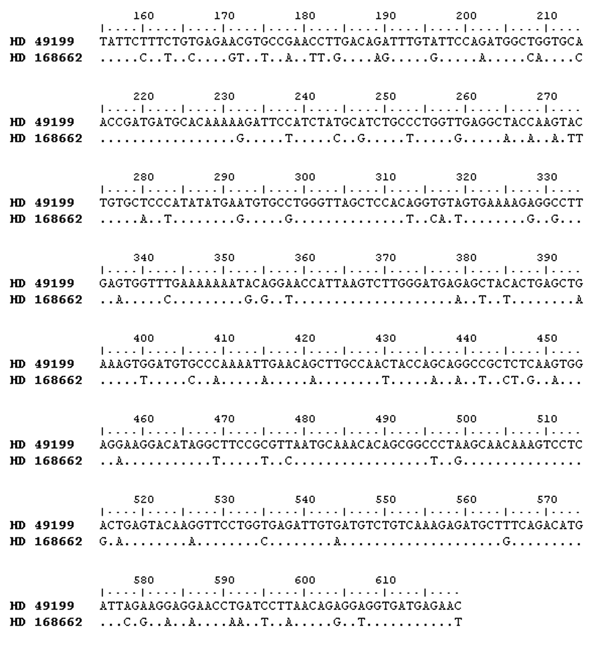Volume 10, Number 12—December 2004
Research
Crimean-Congo Hemorrhagic Fever, Mauritania
Figure 3

Figure 3. Comparison of partial sequences (465 base pairs) of the S segment of Crimean-Congo hemorrhagic fever virus isolated in Mauritania. The BLAST tool was used and positions of nucleotides in the entire S segment are shown. The strain HD 168662, which is representative of human isolates obtained from this study, shows 82.1% nucleotide identity with the strain HD 49199, isolated from a human case-patient in Mauritania in 1988.
Page created: June 16, 2011
Page updated: June 16, 2011
Page reviewed: June 16, 2011
The conclusions, findings, and opinions expressed by authors contributing to this journal do not necessarily reflect the official position of the U.S. Department of Health and Human Services, the Public Health Service, the Centers for Disease Control and Prevention, or the authors' affiliated institutions. Use of trade names is for identification only and does not imply endorsement by any of the groups named above.